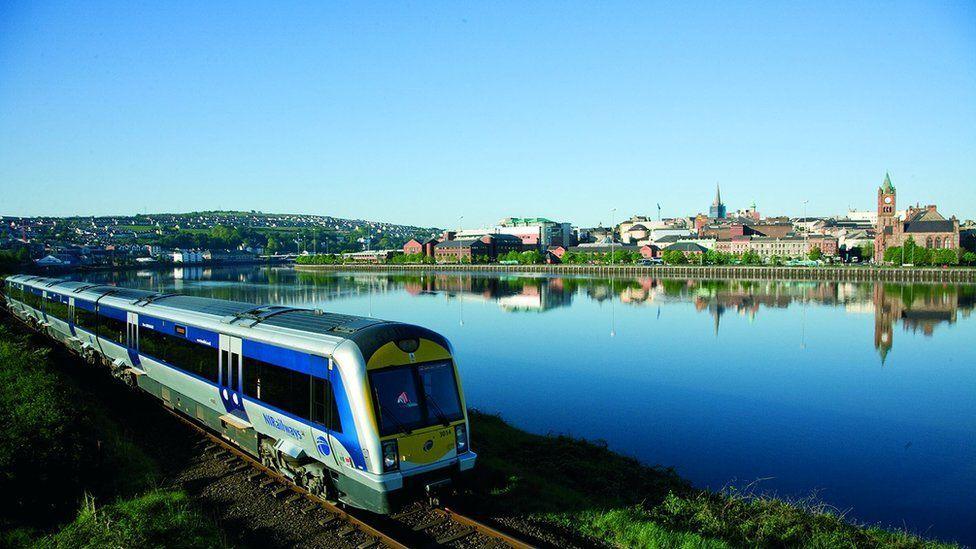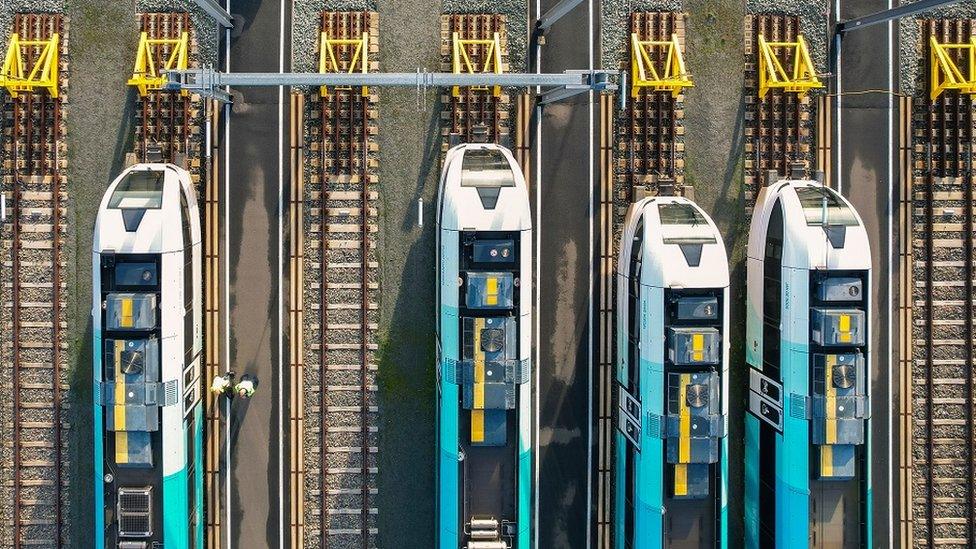Rising sea levels 'a risk' to NI rail network

A number of locations on the Londonderry line are identified as being high risk
- Published
Climate change could severely disrupt key stretches of Northern Ireland’s rail network, a Translink report has found.
The report focuses on the impact of rising sea levels on the rail network and warns that by 2040 a number of locations are at high risk.
It was commissioned by Translink and completed in December last year by transport consultants Aecom.
A Translink spokeswoman said the report forms part of an “overall risk assessment of railway assets”.
The report found that by 2040, seven locations including on Londonderry and Larne lines are at high risk of rising seas.
A further four are also deemed to be at medium risk within the next 16 years.
It further projects the impact of rising sea levels in 2060, 2080 and found that by the year 2100, the number of high risk locations could rise to 13.
The most severely impacted lines are in Derry and Larne.
High risk locations identified by 2100 include Larne, Derry, Castlerock, the Bann estuary, Glynn and Ballycarry.
Ulster Unionist assembly member John Stewart said the report’s conclusions will be of concern to many, especially in his east Antrim constituency.
'Urgent consultation'
He said the loss of any part of the network will impact both the economy and local communities.
“It is inevitable that within the next 16 years the impacts of climate change will destroy parts of the Larne and Londonderry line, with no option existing to save these tracks,” he said.
Mr Stewart said he now wanted to see “urgent consultation with the Department of Infrastructure at looking to move and re-run the Londonderry and Larne line to ensure that the line is not lost completely”.
Translink said that the report will be used to contribute to a climate resilience strategy.
It will also inform a “programme of works going forward to ensure the railway network remains protected against medium and long-term impacts” the Translink spokesperson said.
They added: “Translink also maintain short-term resilience in our sea defences through a series of annual inspection and maintenance works, including before and after storm events”.
A spokesperson from the Department for Infrastructure said the report forms part of the overall risk assessment of railway assets and "will be used to contribute to a climate resilience strategy to protect the railway network.”
- Published25 July 2023

- Published11 June 2023

